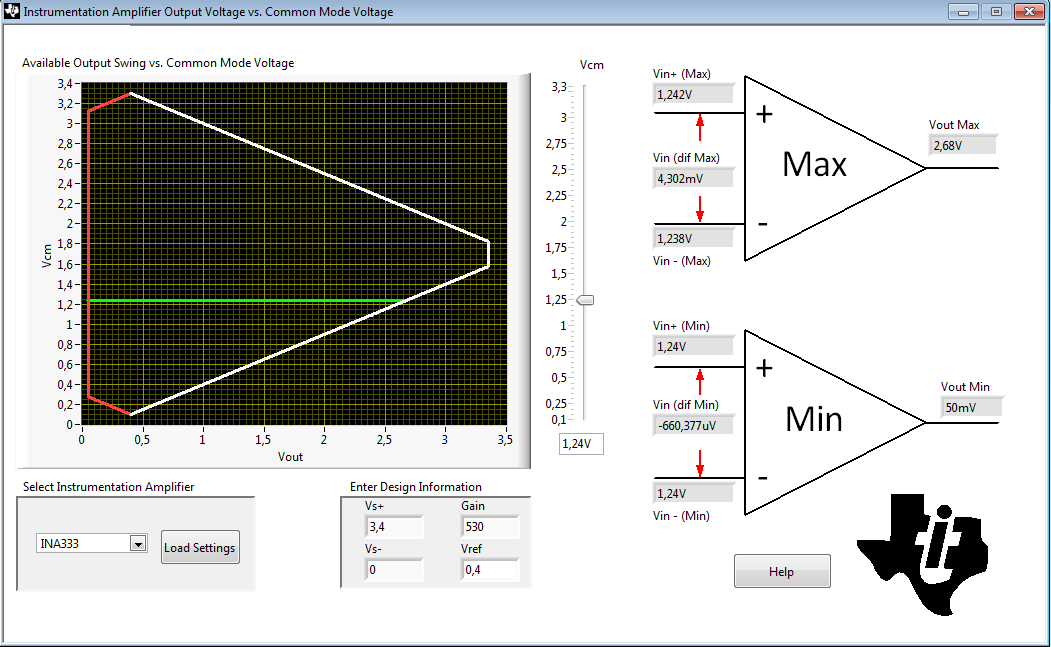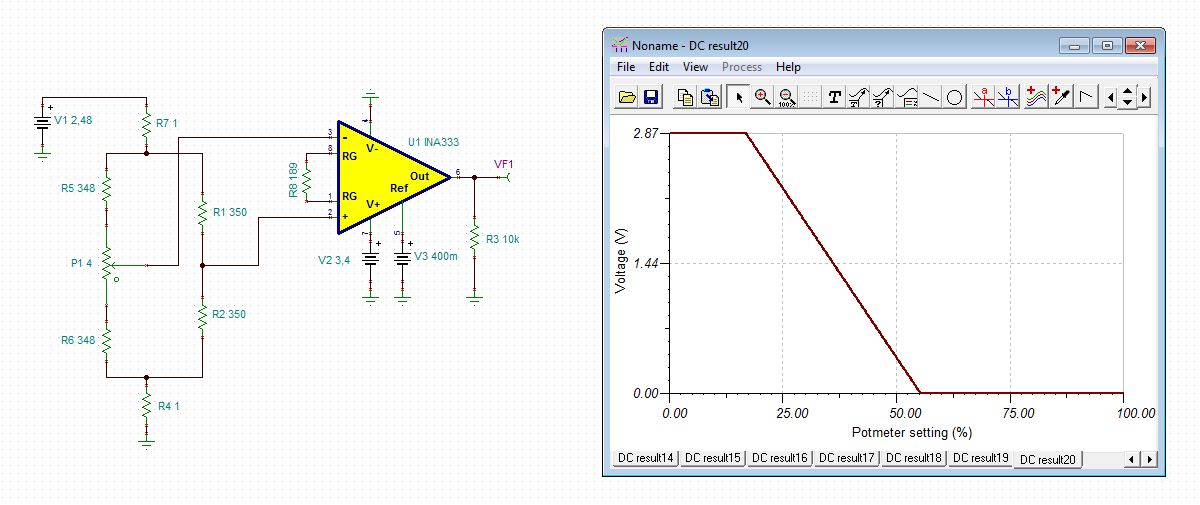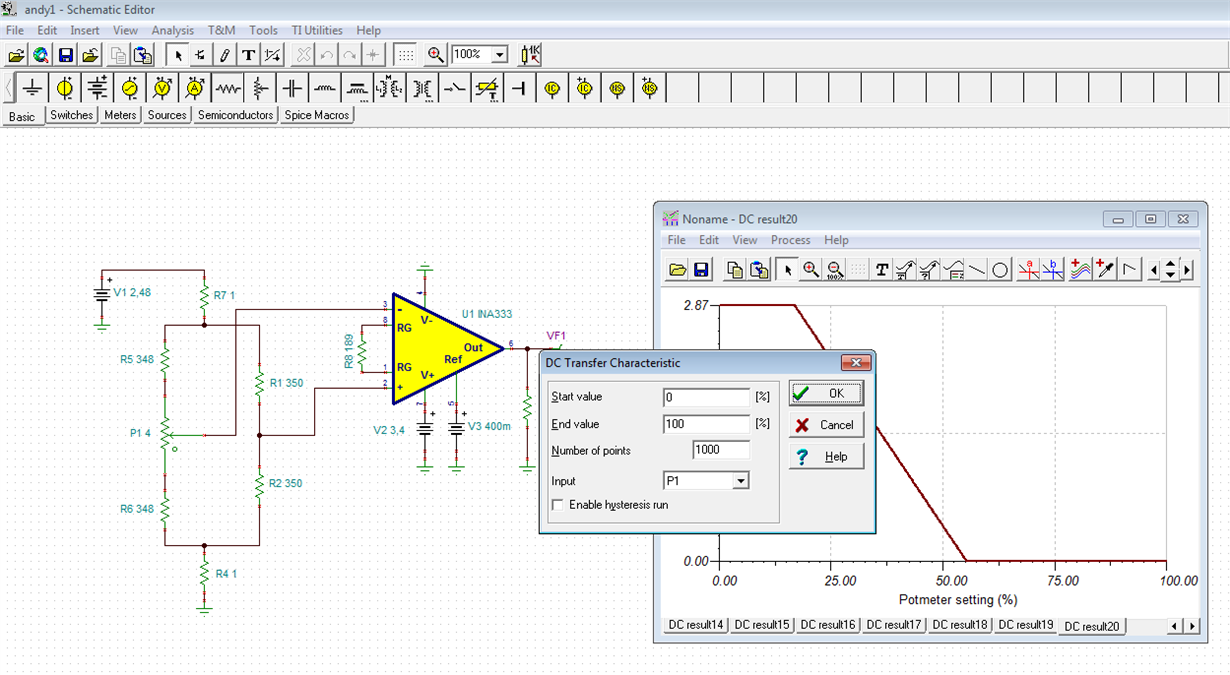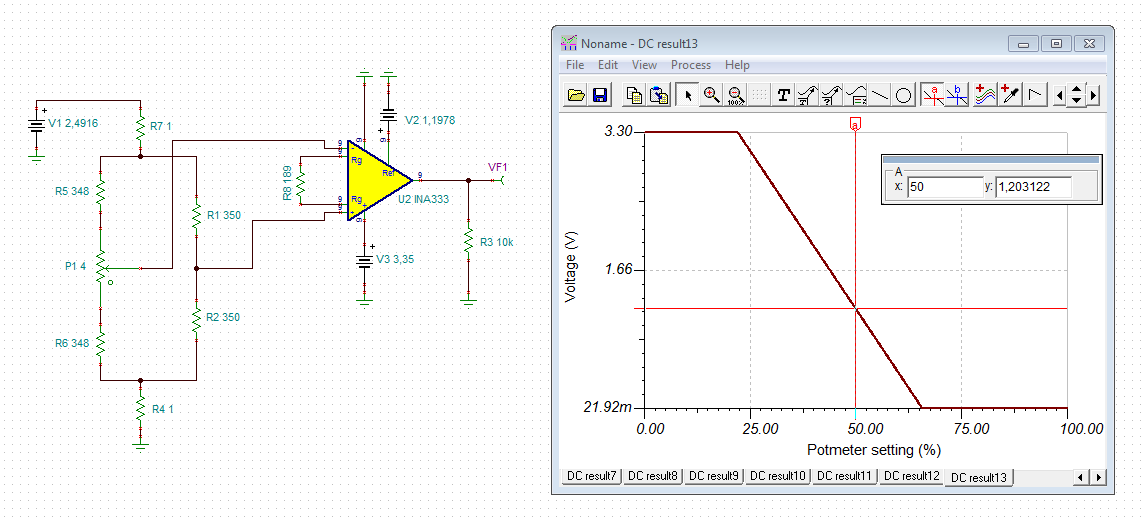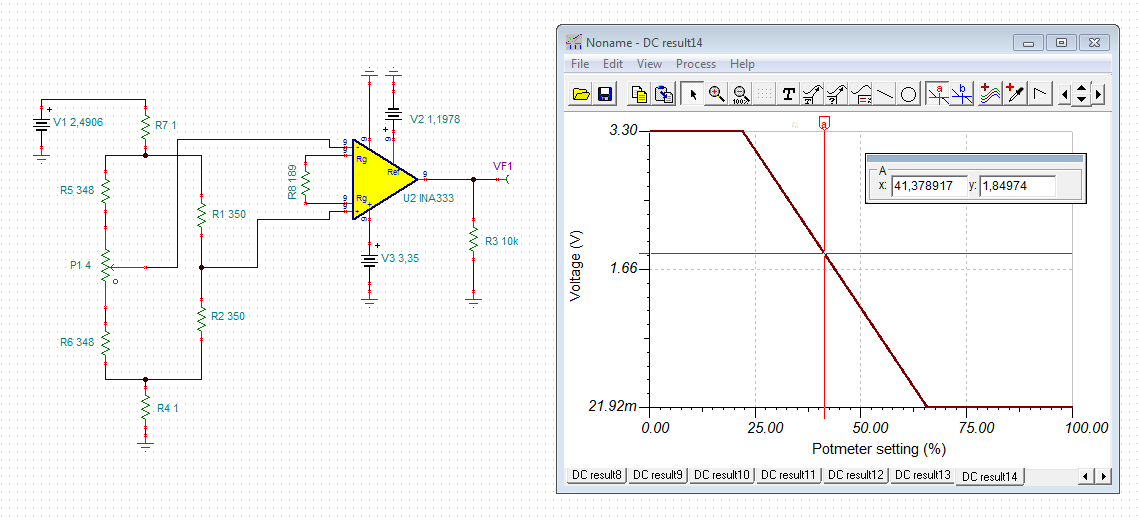Other Parts Discussed in Thread: TINA-TI, , TL431, INA122
Tool/software: TINA-TI or Spice Models
Hi TI:
I am new to this blog and have a 'challenge' that I would appreciate some assistance in. I have been using dual op-amps to amplify a bridge with dual strain gauges for an outdoor application. Currently I amplify by approximately 530x's and then digitize the value using a Teensy 3.2 at approx 100 hz. I have found that I have some initial drift in values - and then after about 10 minutes - values stabilize. To try and improve stability, I purchased INA333 and have been experimenting with it. I am struggling - and suspect it is a Common Mode issue. Thanks to your TINA download - I tried to mimic my circuit and sure enough - I cannot get any readings from TINA! My strain gauges are 350 ohm and I calculate that they vary by +/- 0.5 ohm for my application. I use two different voltage supplies one for the bridge and one for the amplifier) - thinking this would increase the stability of my circuit and the noise.
I enclose my TINA export of my model. The strain gauges are represented by R5 & R6. I even downloaded your output vs CM model - to try and get the CM voltage in range - but that does not seem to help.
I would appreciate some assistance in figuring out what I am doing wrong, if the INA333 is the right module for my application and how to configure the circuit.
Thank you
Andy Basacchi, P. Eng.CM INA333 SIMULATION.CIR




